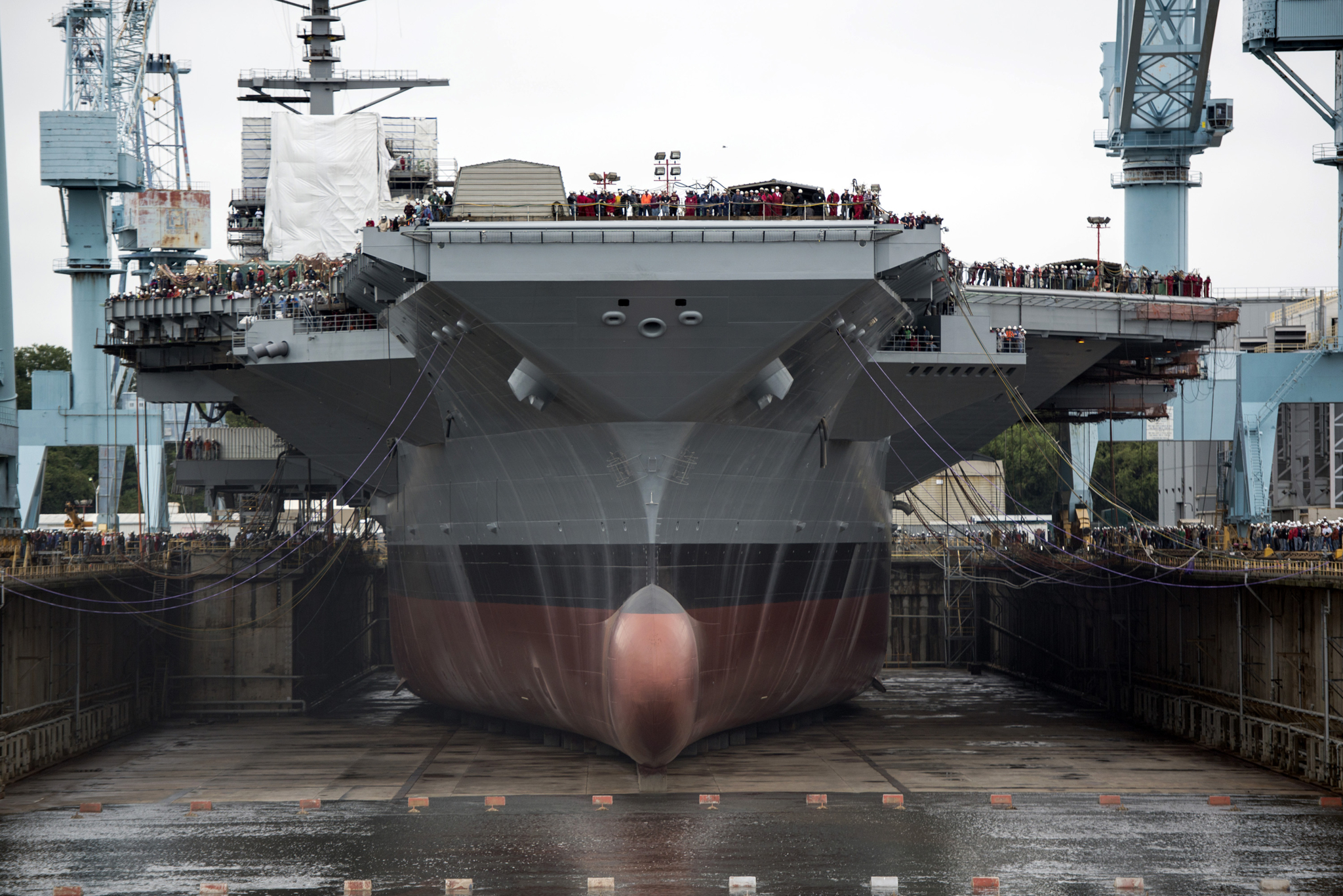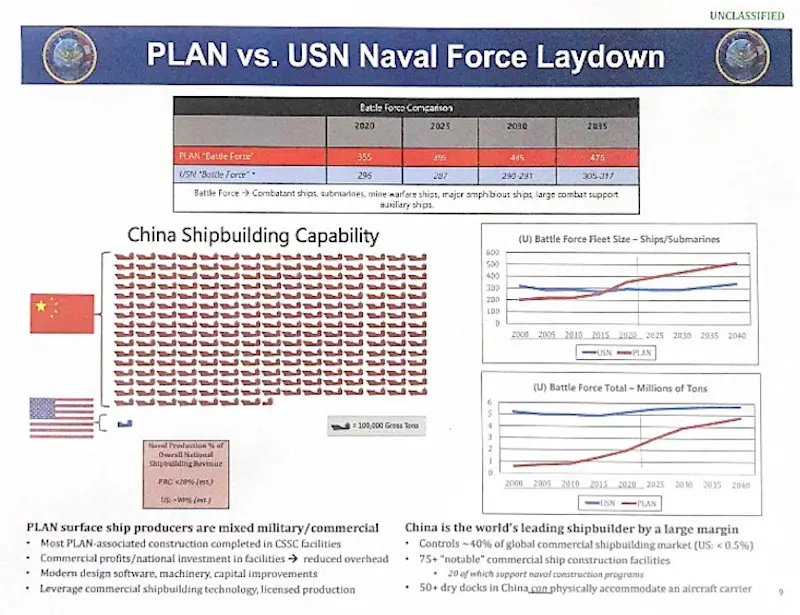
After decades of cutting back on shipbuilding, the United States Navy is attempting to get back up to speed.
America’s remaining shipyards are floundering. China’s shipbuilding advantage puts them leagues ahead of the United States in a potential conflict.
A leaked slide U.S. Navy briefing slide reveals that China’s shipbuilding capacity is 232 times greater than the United States. Specifically, Chinese shipyards have a manufacturing capacity of roughly 23,250,000 million tons, whereas U.S. shipyards have less than 100,000 tons. The authors of the briefing slide predicted that by 2035, China will have amassed 475 battleships; the U.S. will have between 305 and 317.

The War Zone originally reported the data in July, after verifying the slide’s authenticity with the Office of Naval Intelligence. Though this information puts the state of America’s shipbuilding capacity into stark relief, the decline it documents has been underway for decades.
America reached the pinnacle of its shipbuilding history during WWII and continued to serve as the world’s leading shipbuilder for decades thereafter. But competition from subsidized foreign shipyards quickly eroded that lead, especially after U.S. shipbuilding subsidies expired in 1981. Between 1987 and 1992, the U.S. shipbuilding industry “sold only eight commercial ships over 1,000 gross tons, compared to 77 ships annually in 1975,” according to Navy analysis shared in a 2015 Eno Center for Transportation study.
The War Zones notes that U.S. Navy has been working on reversing this trend:
“After decades of cutting back on spending, the U.S. Navy has been trying to explore ways to alleviate those issues, including by modernizing its own remaining shipyards and expanding its use of commercial yards to conduct various types of often sensitive work. Reflecting the trend of shipbuilding capacity increasingly being found outside of the United States, the latter category could eventually include more foreign-owned and operated yards, including ones in Japan, too.”
Additionally, as James Holmes highlights in a 19FortyFive opinion, America has not only ceded its ability to build more ships, but also to repair them and maintain its fleet. China’s capacity here offers crucial military advantage.
China’s huge shipbuilding advantage also carries over into commerce. Recently, The New York Times reported that China’s shipyards are working nonstop to build a fleet of ships capable of exporting the hulk of its auto overcapacity to the rest of the world.
American national security obviously suffers from the reduced strength of our nation’s shipbuilding capacity, but so does its economic health. American shipyards provide valuable, middle-class jobs that generate further economic activity. “[E]very shipbuilding job is supported by or creates three other jobs – e.g. the engineers designing the ship, the steel workers producing what will become the ship’s hull, the accountants tracking the project, etc.,” the Eno Center for Transportation finds.
There have been dire warnings about the diminishing strength of America’s shipbuilding capacity for several years, but the need to restore our nation’s lead is more critical than ever as tensions increase with China.
